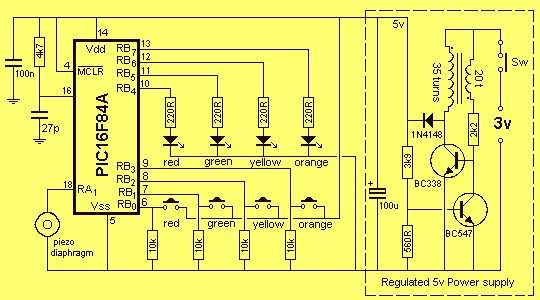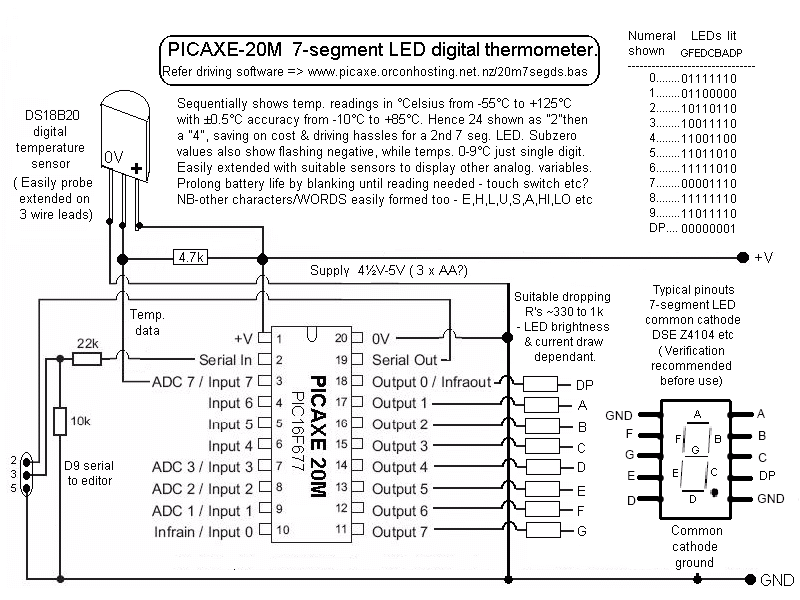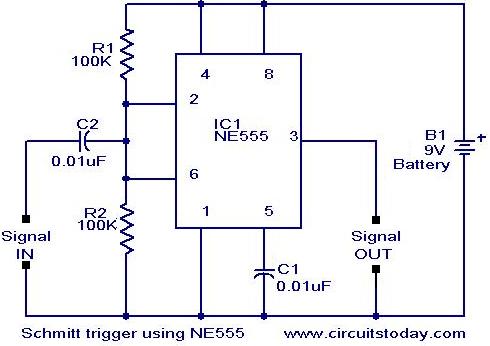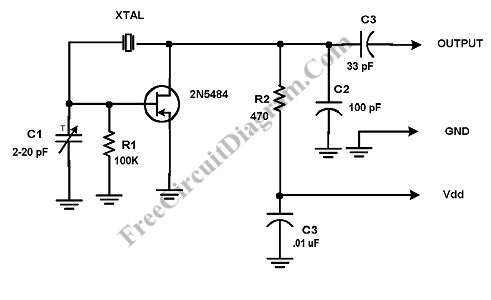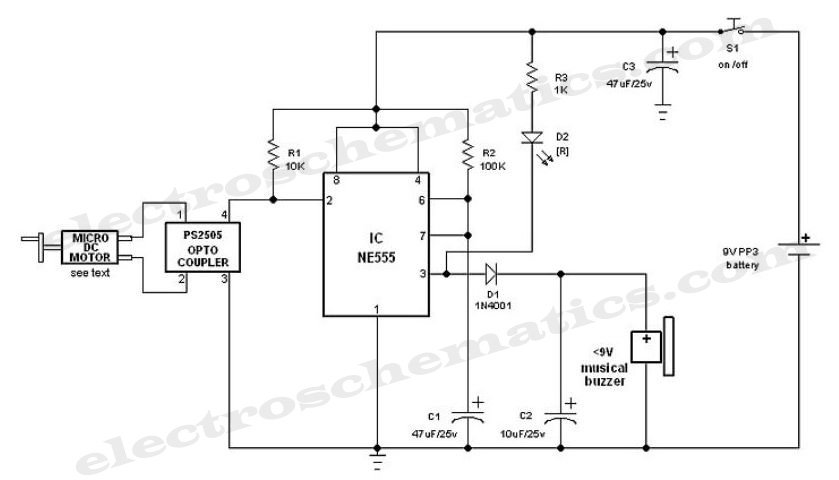
Electronic Combination Lock using IC LS 7220
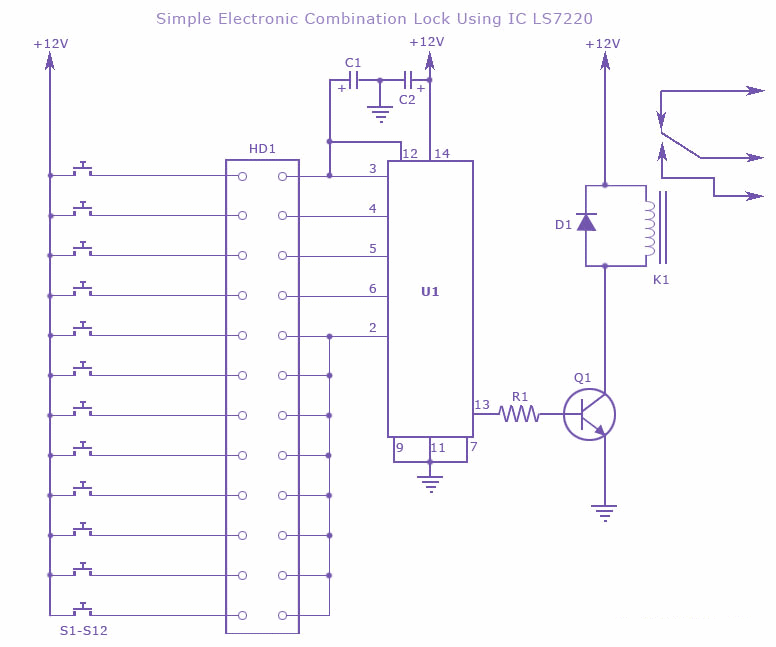
This circuit diagram illustrates a simple electronic combination lock utilizing the IC LS7220. The circuit is designed to activate a relay for controlling any device (turning it on and off) when a specific combination of four digits is entered. It can be powered with a voltage supply ranging from 5V to 12V. To configure the combination, the appropriate switches should be connected to pins 3, 4, 5, and 6 of the IC. For instance, if switch S1 is connected to pin 3, S2 to pin 4, S3 to pin 5, and S4 to pin 6 of the IC, the combination will be 1234. This allows for the creation of any four-digit combination. The remaining switches should be connected to pin 2 of the IC, which will cause the IC to reset if any invalid key is pressed, requiring the entire key code to be re-entered. When the correct key combination is input, the output (relay) will be activated for a predetermined duration set by capacitor C1, which is configured for 6 seconds in this instance. Increasing the value of C1 will extend the activation time. For the keypad, the switches should be arranged in a 3x4 matrix on a printed circuit board (PCB), and the digits can be marked on the keys using a marker. Instead of using numbers, symbols can be used to increase confusion for potential intruders.
The electronic combination lock circuit employs the LS7220 integrated circuit, which is specifically designed for keypad applications. The circuit's operational voltage range of 5V to 12V allows for versatility in power supply options. The LS7220 facilitates user-defined combinations by connecting switches to its designated input pins. The arrangement of the switches in a 3x4 matrix enables efficient use of space on the PCB while allowing for intuitive user interaction.
When a user inputs the four-digit combination through the connected switches, the LS7220 processes the input. If any incorrect key is pressed during the entry, the circuit resets, ensuring security by requiring the user to start over. This feature is critical in preventing unauthorized access, as it eliminates the possibility of partial inputs being accepted.
The relay output is a key component of the circuit, enabling control over external devices. The duration for which the relay remains activated is determined by the timing capacitor C1. In this design, C1 is set to provide a 6-second activation period, which can be adjusted by changing the capacitor's value. This flexibility allows for customization based on the specific application requirements.
The design also emphasizes user-friendliness, as the keypad layout and labeling can be tailored to the user's preference. The choice to use symbols instead of numbers adds an additional layer of complexity for potential intruders, enhancing security. Overall, this combination lock circuit is a practical and effective solution for secure access control in various applications.This is the circuit diagram of a simple electronic combination lock using IC LS 7220. This circuit can be used to activate a relay for controlling (on & off) any device when a preset combination of 4 digits are pressed. The circuit can be operated from 5V to 12V. To set the combination connect the appropriate switches to pin 3, 4, 5 and 6 of the IC th rough the header. As an example if S1 is connected to pin 3, S2 to pin 4, S3 to pin 5, S4 to pin 6 of the IC, the combination will be 1234. This way we can create any 4 digit combinations. Then connect the rest of the switches to pin 2 of IC. This will cause the IC to reset if any invalid key is pressed, and entire key code has to be re entered.
When the correct key combination is pressed the out put ( relay) will be activated for a preset time determined by the capacitor C1. Here it is set to be 6S. Increase C1 to increase on time. For the key pad, arrange switches in a 3X4 matrix on a PCB. Write the digits on the keys using a marker. Instead of using numbers I wrote some symbols!. The bad guys will be more confused by this. 🔗 External reference
The electronic combination lock circuit employs the LS7220 integrated circuit, which is specifically designed for keypad applications. The circuit's operational voltage range of 5V to 12V allows for versatility in power supply options. The LS7220 facilitates user-defined combinations by connecting switches to its designated input pins. The arrangement of the switches in a 3x4 matrix enables efficient use of space on the PCB while allowing for intuitive user interaction.
When a user inputs the four-digit combination through the connected switches, the LS7220 processes the input. If any incorrect key is pressed during the entry, the circuit resets, ensuring security by requiring the user to start over. This feature is critical in preventing unauthorized access, as it eliminates the possibility of partial inputs being accepted.
The relay output is a key component of the circuit, enabling control over external devices. The duration for which the relay remains activated is determined by the timing capacitor C1. In this design, C1 is set to provide a 6-second activation period, which can be adjusted by changing the capacitor's value. This flexibility allows for customization based on the specific application requirements.
The design also emphasizes user-friendliness, as the keypad layout and labeling can be tailored to the user's preference. The choice to use symbols instead of numbers adds an additional layer of complexity for potential intruders, enhancing security. Overall, this combination lock circuit is a practical and effective solution for secure access control in various applications.This is the circuit diagram of a simple electronic combination lock using IC LS 7220. This circuit can be used to activate a relay for controlling (on & off) any device when a preset combination of 4 digits are pressed. The circuit can be operated from 5V to 12V. To set the combination connect the appropriate switches to pin 3, 4, 5 and 6 of the IC th rough the header. As an example if S1 is connected to pin 3, S2 to pin 4, S3 to pin 5, S4 to pin 6 of the IC, the combination will be 1234. This way we can create any 4 digit combinations. Then connect the rest of the switches to pin 2 of IC. This will cause the IC to reset if any invalid key is pressed, and entire key code has to be re entered.
When the correct key combination is pressed the out put ( relay) will be activated for a preset time determined by the capacitor C1. Here it is set to be 6S. Increase C1 to increase on time. For the key pad, arrange switches in a 3X4 matrix on a PCB. Write the digits on the keys using a marker. Instead of using numbers I wrote some symbols!. The bad guys will be more confused by this. 🔗 External reference
